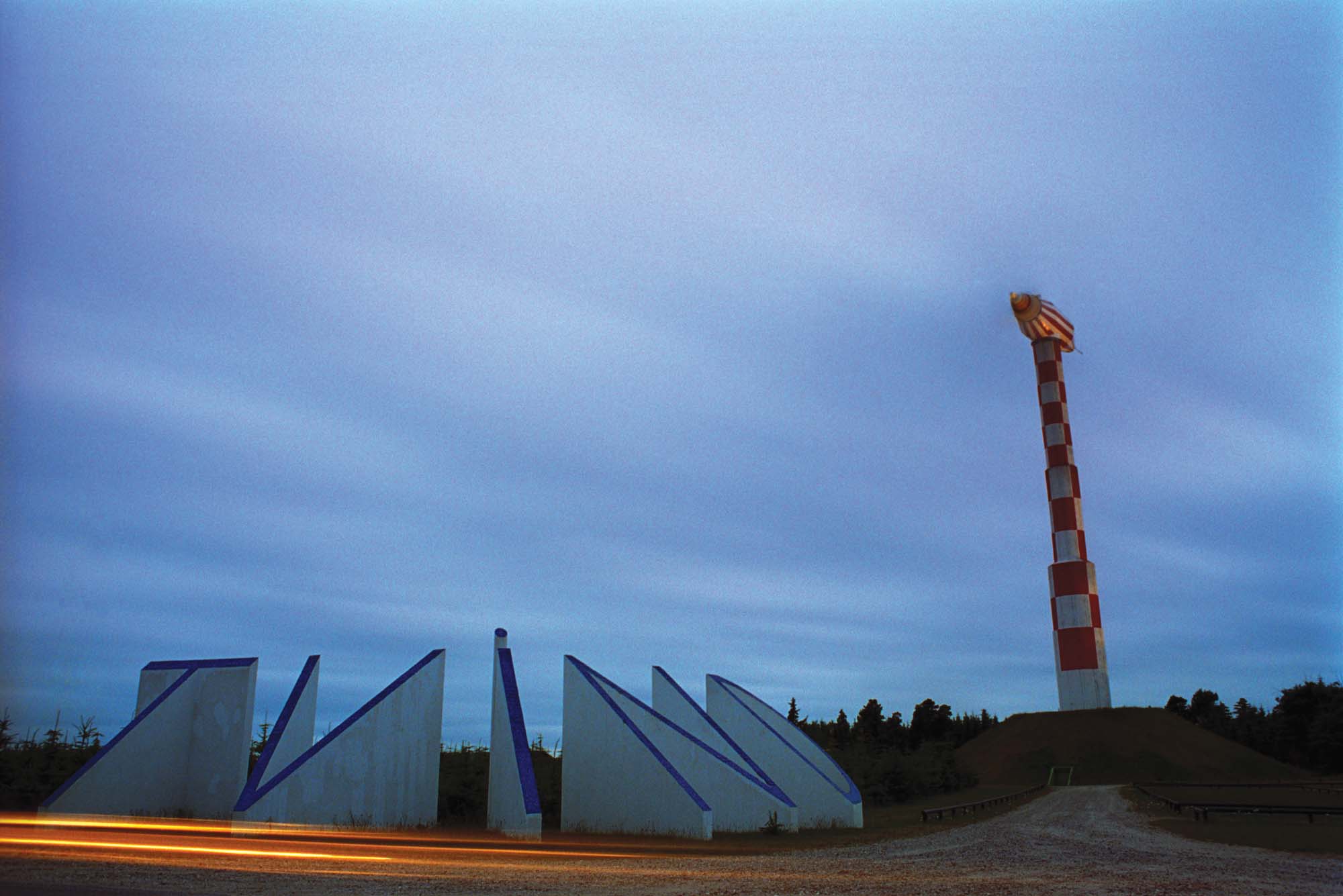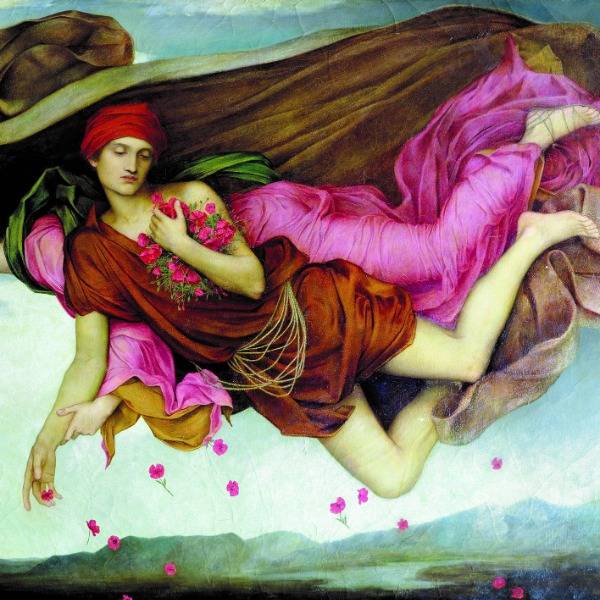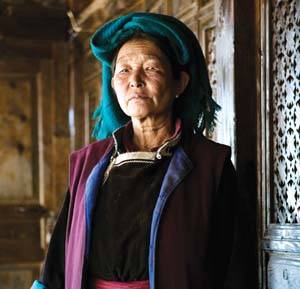
This article is a preview from the Summer 2019 edition of New Humanist
In early 1975 a Danish academic called Lars started coming into the coffee bar at the bookshop and community centre in Hackney, east London, where I worked, to play chess. We got talking. Lars was excited about a project he had visited on the West Jutland coast in northern Denmark, where a group of radical teachers were building a new kind of teachers’ training college, intended to build links with Third World countries and explore issues of colonialism, poverty and international relations.
It wasn’t just the syllabus that would be radical. The most ambitious element of the programme was that the would-be teachers would be responsible for building the college from the ground up – just as the students and teachers at the famous experimental Black Mountain College had done in North Carolina in the 1930s. This Danish college would be built on recently purchased farmland known as Tvind, close to the town of Ulfborg. Students and teachers of “The Necessary College”, as it was to be called, would be growing their own food and building a windmill large enough to supply all the electricity needed for the settlement to be wholly off-grid.
My conversation with Lars led to a party of Tvind teachers and students arriving shortly after, in an old Danish bus, on a study visit to Hackney. On leaving they asked if I could arrange a reciprocal visit; they were keen for others to see the important work they were doing. They said that they would happily provide food and accommodation in exchange for voluntary labour and a chance to discuss new forms of pedagogy and social action. They were insistent that such a party should be made up of “typical” Hackney people, not just intellectuals or social activists.
The final group consisted of myself, two home helps, one swimming-pool attendant, one taxi driver, two former pupils from Hackney Downs School, one free-school pioneer and one community worker. A minibus was borrowed, and one day in September 1975 we set off driving to Harwich to take the ferry to the Hook of Holland. From there we drove through the night and the following day, via Holland and North Germany, towards empty, flat, windswept Jutland.
We arrived mid-afternoon and were warmly greeted and shown our accommodation. Unexpectedly, the group was split up and assigned to separate dormitories, including our married couple. Supper was at 7.30pm and we were free to shower and rest until then. At around 6pm, our small party re-assembled and agreed to go into the nearby village to look around and have a drink before supper after a very long journey. When I mentioned this to one of the people designated to look after us, I immediately sensed a chill in the air.
“Oh no, that would not be possible. It’s not really a good idea for Tvind people to fraternise with the local people. They don’t share our values, and we don’t share theirs, so what is the point?” The words were carefully chosen but the message was clear.
Supper was taken in a large dining hall, with perhaps a hundred people seated at long tables. Everybody seemed to be chatting happily with each other. Most people were smoking pipes, including the women, and the room was thick with tobacco smoke. Our minders – as I soon realised they were – introduced us to the rest of the diners to enormous cheers and clapping. Then began the first of many exhortatory songs which were sung at every meal subsequently, songs about welcoming visitors, songs about building a new world, songs about repairing diesel engines, and so on. The welcome was genuine. Over the ensuing week – and to a degree, ever since – I have struggled to disentangle the genuine idealism, friendliness and warmth of the Tvind members from some of the cult-like social protocols that governed their attitudes towards us and towards each other.
* * *
Each day was spent on activities. We visited the different parts of the college, engaged in discussion groups, took part in workshops (singing was popular, and musicianship encouraged), harvested vegetables from the fields and spent some free time in the sports hall. The morning workshops looked at the world news on television. Participants were led through a discussion of current international events with a fairly strong directive line coming from the workshop leaders.
The most impressive aspect of Tvind was the refurbishment of old buses for the “Travelling Folk High School”, a programme of international visits that for me constituted the most original part of the operation. In a large hangar, half a dozen buses were up on blocks, stripped to their carcasses, being refitted with extra large fuel tanks, water tanks, washrooms, bunk beds and foldaway tables, in preparation for journeys that might cover thousands of miles and take months at a time, sometimes in extreme travelling conditions. All students were required to learn how to strip a diesel engine and put it back together again, bleed the brakes, change wheels, rewire the electrics and fit out the interiors.
It fell to me to liaise with our minders. From time to time I suggested we needed some free time to absorb and discuss everything we were seeing. I wanted to know whom to ask for permission. It was evident that there was a guru or leader-type figure somewhere on the site. In our early discussions about the visit, his name had been mentioned on several occasions as the final arbiter of all public affairs and projects, including our visit. But when we asked if we could meet him, we were invariably told he was busy. At one point he was pointed out to me, hurrying from one building to the next, a slim, bearded figure surrounded by a coterie of the college founders, subsequently known slightly ominously as “The Teachers’ Group”. It was becoming clear that Tvind was somewhat different from what we had been told in London was a democratic experiment in education for a new society.
* * *
Other aspects of Tvind also gave me cause for concern. One of the young men I shared a room with told me he had been sent to Tvind as an alternative to a custodial prison sentence for drink and drugs offences. I heard a familiar narrative: an unhappy childhood, brutal father, growing involvement in the local drug scene, but now, almost miraculously, a new start in life. Most of the young people we talked to recounted a similar story, as if they had been coached in the same narrative arc of political and spiritual redemption as a result of Tvind. We were shocked to learn that any woman who became pregnant was asked to leave immediately, which other Tvind members thought unduly harsh. Life at Tvind was more closely monitored and managed than any of us first had appreciated.
After six days, it was time to go home. Our party had mixed views. Some were impressed and felt a strong sense of purpose at Tvind, while others expressed reservations. When I recently asked one of the original party what he remembered of the trip, he said that “the group from Hackney were, if anything, natural anarchists so any notion of the kind of controlling behaviour of the ‘teachers’ was never going to go down well.” As we left, we wished our minders well, thanked them for their help in arranging the visit and told them that we looked forward to hearing about the windmill’s completion. This was the one element of the project that was openly discussed as presenting difficulties, in what was otherwise represented to the outside world as a flawless, expanding utopian community.
I have never forgotten Tvind. It provided an important episode in my own political education, having always been interested in alternative communities, or “elective communities” as they are termed in the US. Despite the fact that so many fail, these “experiments in living”, as John Stuart Mill approvingly called them, invariably raise important issues around the production and distribution of resources and power, still largely unexplored in the practice of everyday life. In 1887 William Morris posed the question directly, titling a lecture: “How We Live and How We Might Live?”
* * *
Some time in the early 1990s, I read an article in the Guardian by journalist Michael Durham about an independent school in Norfolk that had become the subject of complaints by pupils and parents, not only about the quality of the teaching, but the school’s mysterious origins and ownership. Dissatisfied parents who thought they were paying for an idealistic “outward bound” education for their children claimed instead that the school ethos resembled a cult.
Durham investigated, and unpicked a tangle of shell companies and charities whose headquarters were in Denmark but which had operations under numerous aliases across Europe, Africa and North and South America. Ostensibly dedicated to Third World development, their finances were complex in the extreme – deliberately so. Governments, public authorities, aid agencies and charities around the world had been pouring money into many and various educational schemes promoted by this network for several decades, but some were beginning to have second thoughts. The original home of this now global operation was none other than The Necessary College at Tvind. Durham subsequently set up a website called Tvind Alert, dedicated to exposing the organisation’s complex duplicities.
In a number of online reports and testimonies, Durham and others paint a picture of multiple businesses and charities set up with offshore accounts over many years. They are all seemingly devoted to setting up schools and colleges and aid projects in the developing world. Many of them appear to be dubiously managed, possibly funneling tens of millions of public money into a small number of private accounts. The Danish government has never managed to successfully prosecute any of the individuals associated with Tvind, and despite widespread international concern, its operations still appear to be largely intact. The present situation seems to be that a number of founder members have put themselves beyond the reach of the law in a network of impressive villas in Mexico, while the Danish government and other authorities try to extradite them and bring them to trial.
Yet this story itself is not unproblematic. I was surprised to come across a contemporary aerial photograph of Tvind online that appeared to show a thriving collection of buildings, gardens, orchards and woodland, where I remember seeing only barren fields in the 1970s. Unlike in George Orwell’s Animal Farm, the windmill did eventually get built, a model of streamlined elegance. Danish educational authorities continue to support Tvind, and have presumably found a way of differentiating the good work from the bad, the good guys from the alleged criminals.
* * *
Is the story of Tvind, then, yet another tale of a revolution that devoured its own children? I know several friends who have lost children to religious cults, but I’m aware that there is something cultish about radical politics too, and not just its fringe elements. In my lifetime, a number of left-wing sects have imploded in a furore of allegations by ex-members of leader-worshhip, bullying, internal witch-hunts and, on occasions, sexual abuse. The Chilean novelist (and erstwhile Trotskyist) Roberto Bolaño once wrote: “We fought for parties that, had they emerged victorious, would have immediately sent us to a forced labour camp.”
The question I still ask myself about Tvind is whether from the outset its founders harboured ambitions for control and personal entitlement. In other words, when did the bad begin? The best analysis of cults is that given by Eileen Barker in a report for the Home Office in 1989, in response to growing anxieties about cult religions in the UK, called New Religious Movements: An Introduction. Her study suggested that religious cults possess both positive and negative features, which those familiar with political sectarianism may also recognise. Most joining such sects eventually leave unharmed, and some are even strengthened by their involvement.
However, Barker’s report also noted the danger signals that indicate when good intentions go astray. These were, she suggested: a) when a movement cuts itself off geographically or socially from the rest of society; b) its members increasingly rely on other members for their definition of “reality”; c) sharp distinctions begin to be made between “them” and “us”; d) important decisions about members’ lives are made by others; e) leaders claim special privileges or divine authority; f) leaders and movements become obsessed with a single goal pursued at the cost of all other aspects of life.
Throughout history people have attempted to establish separate, self-sufficient communities as a way of questioning the society they live in, not by word but by deed, from the Diggers and the Chartists to a plethora of “New Life” settlements established in Britain in the early 20th century. Now, 500 years after the publication of Thomas More’s book Utopia, there is a significant literature on the subject, ranging from Norman Cohn’s grim history The Pursuit of the Millennium to Orwell’s Animal Farm, from Margaret Atwood’s The Handmaid’s Tale to Lukas Moodysson’s comic film Together. Utopian (and dystopian) literature and film culture is extensive and vividly imagined; actual communitarian experiments less so.
It was perhaps no accident that Orwell chose to make the building of a windmill the symbol of the first step towards the promised land in Animal Farm. Orwell was by temperament an anarchist, and if communism was once defined as Soviets plus electrification, then anarchism has been described as communes or cantons plus windmills. Wind power might have once seemed an anachronism but it is now part of an urgent set of questions linked to globalisation and climate change. Modern wind turbines not only generate power locally – in more than one sense of the word – but do so through a “homeostatic” system or grid: when extra power is needed, the grid provides it from elsewhere, and when there is a local surplus the grid redistributes it to those in need. In a world of increasing inequality, systems that promote equilibrium in the distribution of resources offer a model for wider social policy.
Despite the wider project’s fall from grace, the windmill at Tvind represented an important milestone in the history of Danish energy policy. It was a pioneer of the country’s wind turbine industry, as well as providing a model for hundreds of local turbine co-operatives operating today throughout Denmark, contributing significantly to the 42 per cent of the country’s electricity supply. Not only did the spread of these co-operatives actively engage the Danes in energy policy but they have also been credited with changing public attitudes to environmental issues in fundamental ways. There’s a lesson in this story, though even today I’m still not quite sure what it is.

